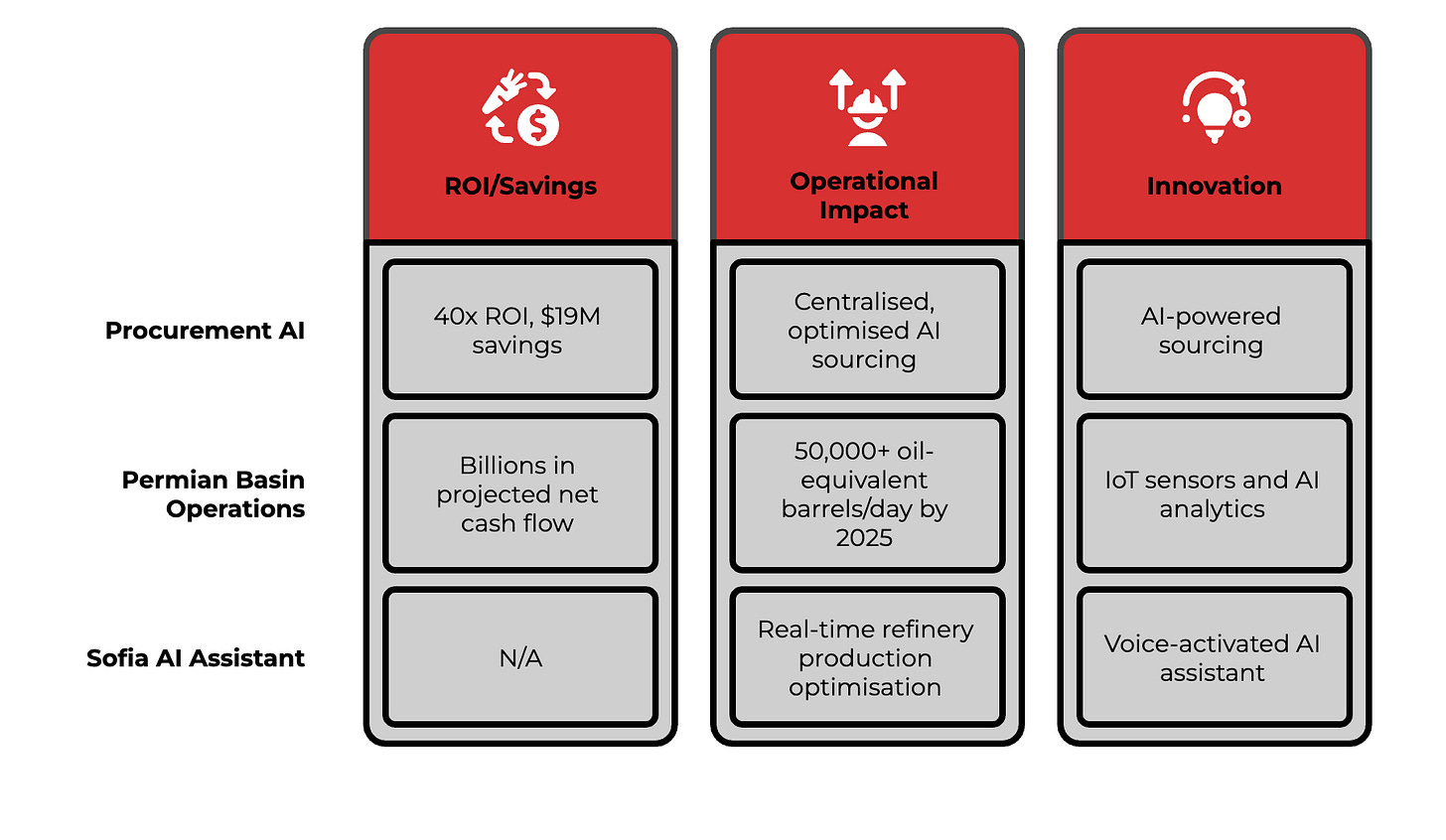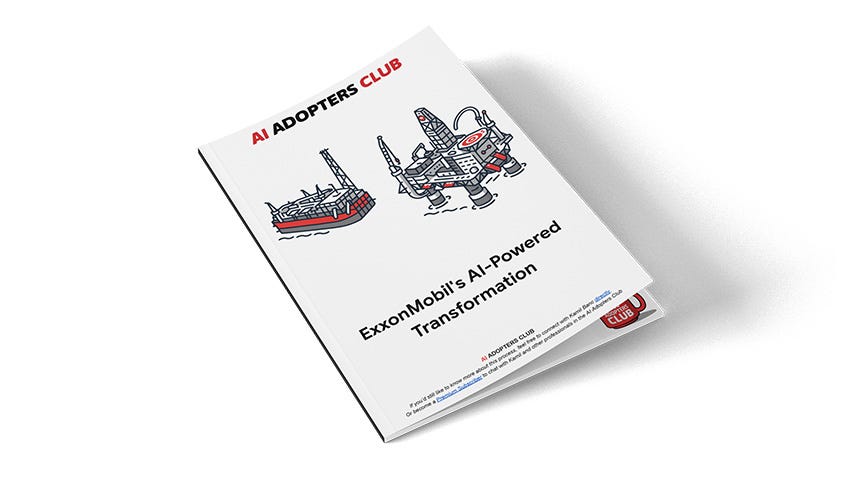ExxonMobil's AI Strategy
How Big Oil Became the AI Industry's Power Provider
Hi Adopter,
Most companies are still figuring out how to use AI without looking foolish, but one oil giant has already moved to powering it.
ExxonMobil's AI strategy isn't another "we're exploring AI opportunities" announcement that says nothing while promising everything. It's what happens when a 150-year-old company treats artificial intelligence like an actual business problem instead of a shiny new toy. The results make most tech company AI initiatives look like expensive science experiments.
While competitors scramble to reduce costs with AI pilots that generate impressive PowerPoints but questionable returns, ExxonMobil built what industry analysts call a "dual engine" approach. They're using AI to slash internal costs whilst positioning themselves as the primary energy provider for the AI revolution itself. Sometimes the tortoise really does beat the hare.
Are you a student or professor who would like to have access to my case studies? Here is a deal for you if you have a .edu email address
ExxonMobil's AI Implementation: The Financial Results
Procurement AI Delivers 40x ROI
ExxonMobil's AI procurement system delivered a 40x return on investment in 2024 alone, generating $19 million in cost savings from a single application. This isn't theoretical ROI. It's hard cash saved from centralising and optimising procurement through AI-powered sourcing.
Permian Basin Operations Transform Revenue
Their Permian Basin operations showcase similar precision. By deploying IoT sensors and AI analytics across their largest oil field, they've unlocked billions in projected net cash flow over the next decade. Production increases of 50,000 oil-equivalent barrels per day by 2025 demonstrate how AI translates directly into revenue growth.
Sofia AI Assistant Optimises Refinery Operations
But the real innovation lies in their downstream operations. "Sofia", their voice-activated AI assistant named after the Greek word for wisdom, helps refinery operators optimise production in real-time. Engineers can now ask Sofia to identify underperforming equipment or spot opportunities to increase output, turning complex data analysis into conversational insights.
ExxonMobil's Strategic Pivot: From AI User to AI Infrastructure Provider
Positioning for the Data Centre Energy Market
The strategic pivot reveals ExxonMobil's true ambition. CEO Darren Woods has repositioned AI from a technology the company adopts to a massive market opportunity it can capture. The voracious energy demands of data centres and AI computing represent what Woods calls up to 20% of the total addressable market for carbon capture by 2050.
Natural Gas Power Plants for AI Infrastructure
Their solution bypasses traditional grid constraints entirely. Dedicated natural gas power plants, co-located with data centres and equipped with carbon capture technology, can deliver reliable, low-carbon electricity faster than nuclear alternatives. Woods has been vocal about nuclear's "l-o-o-n-g road" to deployment, framing ExxonMobil's gas-plus-capture approach as the pragmatic choice for tech companies desperate for power.
The AI Strategy Breakthrough Every CEO Should Study
Here's where ExxonMobil's strategy becomes genuinely extraordinary, and why every business leader should study their playbook. The company has achieved something most organisations can only dream of: they've made their core product, natural gas, indispensable to the very technology revolution that threatens traditional energy companies.
Want the complete strategic breakdown? The full report PDF reveals ExxonMobil's competitive moats, risk mitigation strategies, and the three critical lessons any company can apply to their own AI transformation.
What you'll discover:
The "forcing function" strategy that solved decades-old IT problems overnight
How ExxonMobil's Discovery 6 supercomputer delivers 4x processing speed improvements
The regulatory and policy advocacy playbook that de-risks billion-dollar bets
Why their autonomous drilling system in Guyana represents the future of industrial AI
The complete DMAIC framework analysis showing exactly how they scaled from pilots to enterprise deployment







